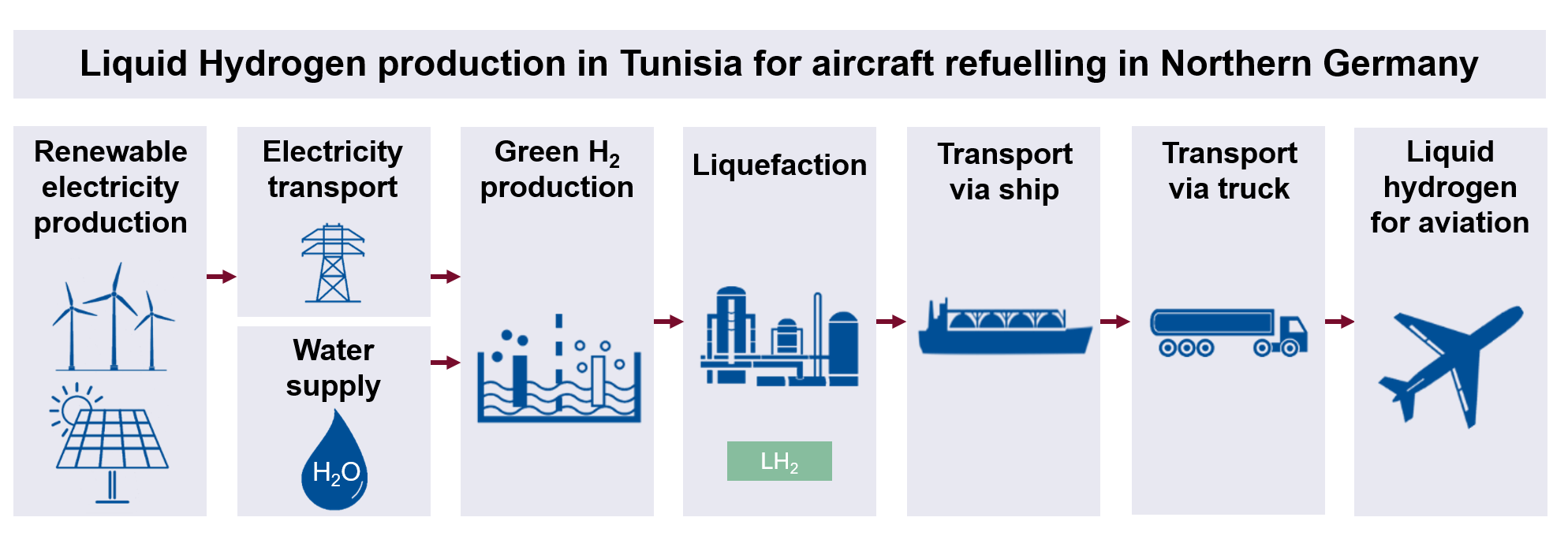3.4 Hydrogen Supply Chains
After you have learned about the different technologies for storing and transporting hydrogen in the previous two sections, you will learn in this last part of the chapter what future supply chains for green hydrogen could look like. The term hydrogen supply chain describes the entirety of all process steps and the technologies applied between the production of the initial raw materials (e.g. renewable electricity) and the end use of the hydrogen or the derivative.
3. Example 2: Transport of liquid hydrogen via ship

Since the boil-off losses that occur during the storage of liquid hydrogen (as described in Chapter 3.2) increase with the duration of transport, liquid hydrogen-based supply chains are less suitable for very long transport distances. For the assumed supply of liquid hydrogen to an airport in Northern Germany, Tunisia is chosen as an export country becuase it is relatively close to Central Europe. Large-scale seasonal hydrogen storage is not used in this example for two reasons. Due to its geographical location, the seasonal fluctuations in the availability of renewable energies in Tunisia are significantly lower than in most parts of Europe. In addition, the boil-off losses already mentioned would be high if liquid hydrogen were to be stored for long periods of time.